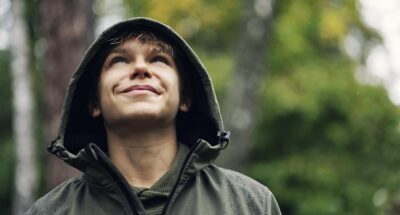
Look Up Vibe (LUV Moment)
Students step outside, take a pause, and gently look up to experience the interconnected nature of life.

Students step outside, take a pause, and gently look up to experience the interconnected nature of life.
Students will:
Keltner, D. (2023). Awe: The new science of everyday wonder and how it can transform your life. Penguin Press.
Research tells us that awe is deeply connected to experiences in nature. In a study of a diverse group of 90 undergraduate students, participants were asked to gaze up at towering eucalyptus trees for 1 minute (awe condition) or to look up at a tall building (control condition). Next, the experimenter “accidentally” dropped a box of pens, giving the participants an opportunity to help pick them up. The ones in the awe condition were more likely to help gather the pens, as well as report increased ethicality and lower levels of entitlement.
Students who feel awe are more committed to school through a sense of interconnection, purpose, and meaning. Indeed, awe can help students learn about themselves, encouraging them to ask at a critical point in their development the essential question, “Who am I?” At the same time, awe can also foster a wonder and curiosity in students about the interrelatedness and dependence of life, helping them to locate themselves within a systems view of life that is impermanent and ever-evolving.
Awe may also help to foster empathic, prosocial relationships between students by lessening students’ focus on themselves. By cultivating open-mindedness and humility, awe may ultimately support greater diversity, equity, inclusion, and belonging in classrooms, schools, and beyond.

Are you ready to build a kinder, happier school where everyone belongs? Join Greater Good Educators! Explore the science of well-being in a supportive community of educators from around the world. Registration is now open for the 2025-2026 school year!
Comments